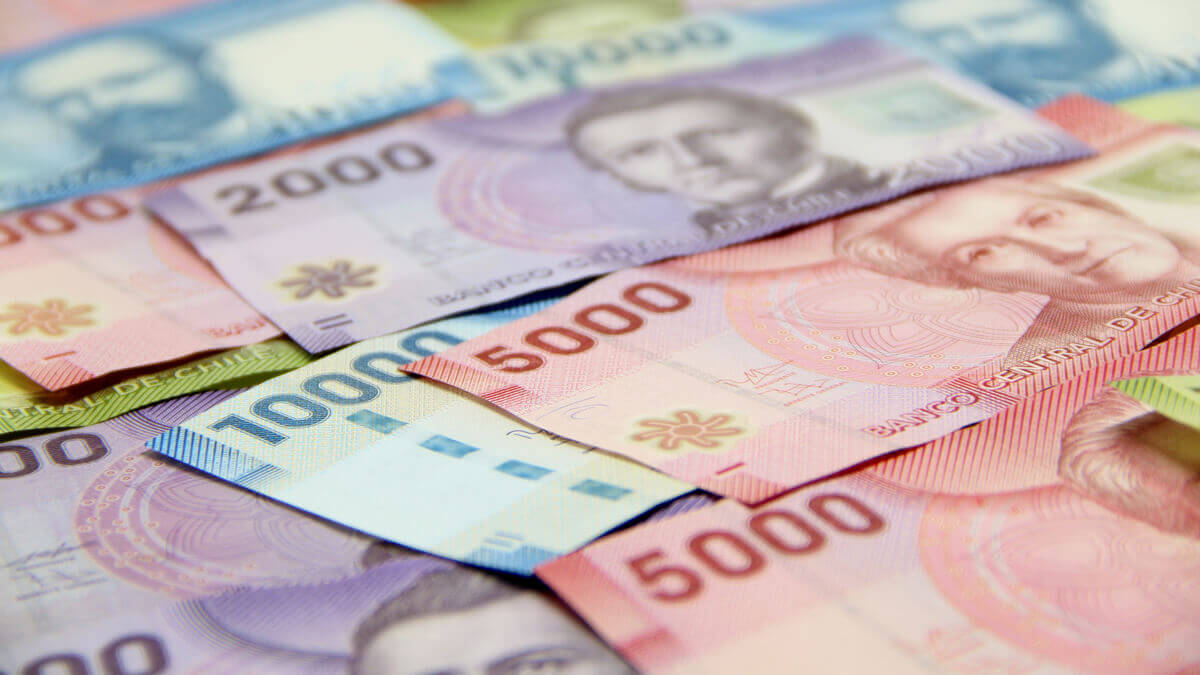At the heart of Chile’s monetary system, banknotes serve not only as units of exchange but also as genuine historical and artistic capsules that capture the essence of the country. Each Chilean banknote is a canvas that celebrates the nation’s cultural diversity and natural beauty. Through their designs, we are invited to explore the people and landscapes that have left a lasting imprint on Chile’s history and identity.
In this detailed exploration of Chilean banknotes, we’ll delve into the symbolic significance of each denomination, showcasing the historical figures and breathtaking locations that they commemorate.
The $1,000 Banknote: Ignacio Carrera Pinto and Torres del Paine
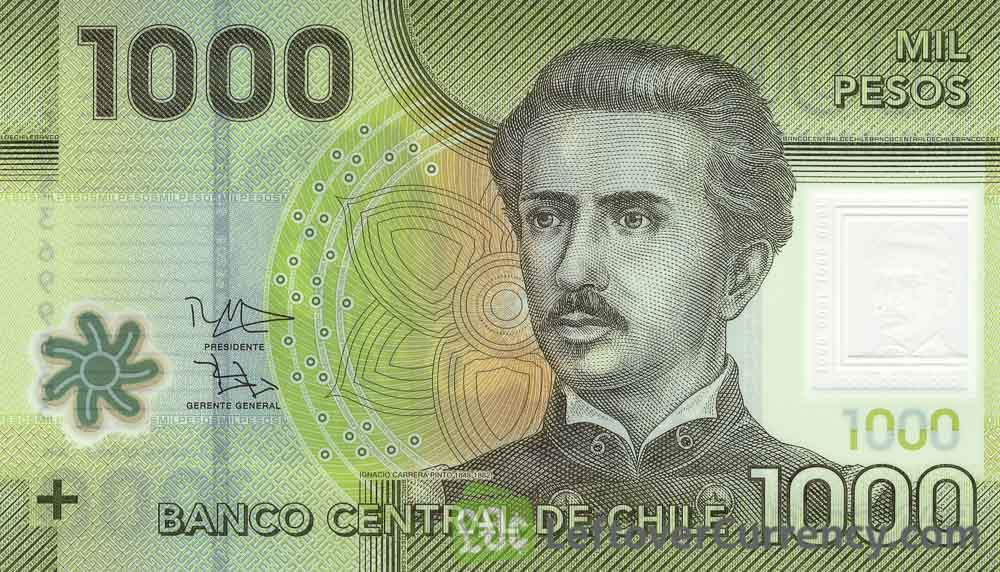
The $1,000 peso banknote pays tribute to Ignacio Carrera Pinto, a captain in the Chacabuco Battalion and a hero of the War of the Pacific, particularly recognized for his valor in the Battle of La Concepción. Carrera Pinto’s legacy is a symbol of Chilean patriotism and courage during one of the most defining moments in the country’s military history.
On the reverse side, the bill features the awe-inspiring Torres del Paine, a centerpiece of the Torres del Paine National Park in the Magallanes Region, located in the southern part of the country near Puerto Natales. This region is famous worldwide for its stunning landscapes, marked by towering mountains, pristine lakes, and a vast array of wildlife. Two guanacos, a species of camelid native to the Andean regions between Peru and Tierra del Fuego, are depicted alongside the majestic peaks, emphasizing the ecological richness of the area.
The $1,000 bill is the smallest in size among Chile’s current series, measuring 120mm x 70mm, and is made from polymer, a durable plastic material. This banknote is not only a celebration of Chile’s rich natural heritage but also a visual reminder of the need to preserve such unique and untouched environments.
The $2,000 Banknote: Manuel Rodríguez and Nalcas National Reserve
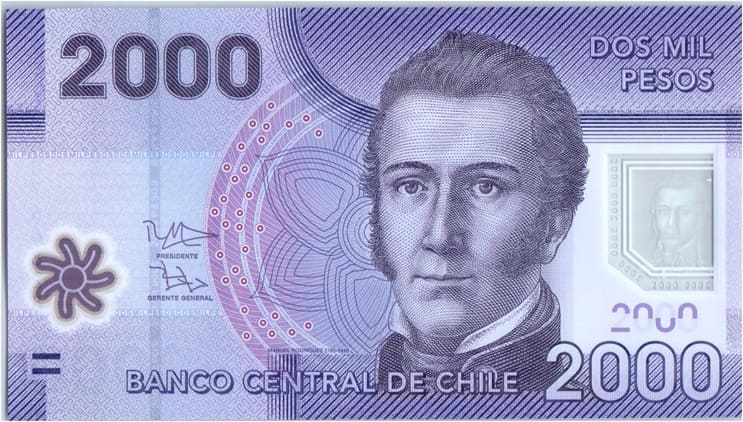
The $2,000 peso banknote honors Manuel Rodríguez, one of the key figures in Chile’s independence movement. Known for his role in guerrilla warfare against Spanish forces during the country’s fight for freedom, Rodríguez is revered as a symbol of resistance and national pride.
On the reverse, we encounter the Nalcas National Reserve, located in the Araucanía Region. The bill showcases a view of Lonquimay Volcano and the Choroy parrot, a species endemic to the southern forests of Chile. The National Reserve is a protected area that offers a glimpse into the country’s rich biodiversity, featuring a wide range of flora and fauna that thrive in the pristine landscapes of southern Chile. For nature lovers, the Nalcas Reserve is a sanctuary of tranquility and a testament to the ecological wonders that Chile has to offer.
Like the $1,000 bill, the $2,000 banknote is made of polymer and measures 127mm x 70mm. Its purple hue sets it apart visually, reinforcing its symbolic connection to Chile’s vibrant landscapes and historical figures.
The $5,000 Banknote: Gabriela Mistral and La Campana National Park
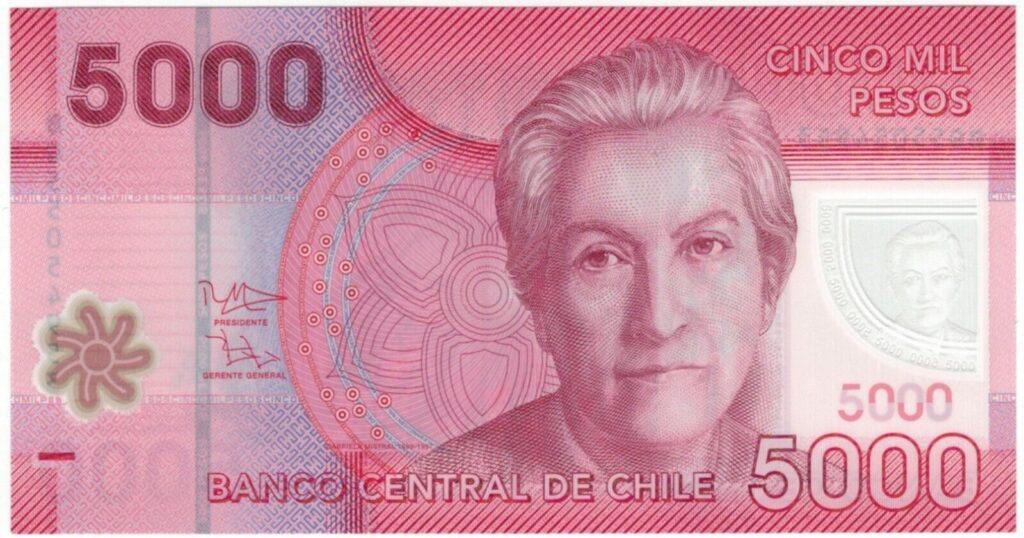
The $5,000 peso banknote features the distinguished Gabriela Mistral, Chilean poet and the first Latin American woman to receive the Nobel Prize in Literature in 1945. Mistral’s work reflects themes of love, sorrow, and the natural world, making her an iconic figure in both Chilean and world literature.
On the reverse side of the bill, the focus shifts to the La Campana National Park, located in the Valparaíso Region within the Coastal Range. This park is home to one of the last remaining reserves of the Chilean palm, a species endangered due to deforestation and habitat loss. Perched on a branch in the background is the Tucúquere, a large owl native to the region, adding to the biodiversity represented on the bill.
The $5,000 note, like others in this series, is made from polymer for durability and measures 134mm x 70mm. Its representation of Mistral alongside one of Chile’s most significant national parks underscores the connection between Chile’s literary history and its commitment to preserving natural treasures.
The $10,000 Banknote: Arturo Prat and Alberto de Agostini National Park
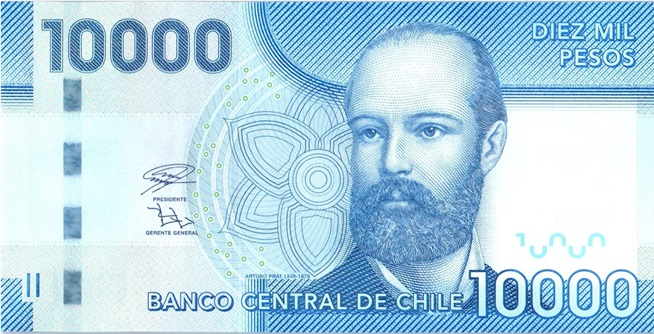
The $10,000 peso banknote showcases Arturo Prat Chacón, a celebrated naval officer and hero from the War of the Pacific, particularly known for his valiant efforts during the Battle of Iquique. Prat is a national hero, and his bravery at sea has become an enduring symbol of Chilean resilience and patriotism.
On the reverse, the bill highlights the vast beauty of the Alberto de Agostini National Park in the Magallanes and Chilean Antarctic Region. This park covers a diverse range of ecosystems, including subantarctic forests, glaciers, fjords, and towering mountain ranges. Hovering above this spectacular landscape is a condor, Chile’s national bird, which can be found soaring over the Andes and along the Pacific coast. The inclusion of the condor on the bill reinforces the connection between Chile’s national symbols and its diverse landscapes.
Measuring 141mm x 70mm, the $10,000 banknote is made from cotton paper, a material traditionally used for printing high-denomination bills. Its blue color symbolizes the marine legacy of Arturo Prat and the profound connection Chile has with both its maritime heritage and natural wonders.
The $20,000 Banknote: Andrés Bello and Salar de Surire
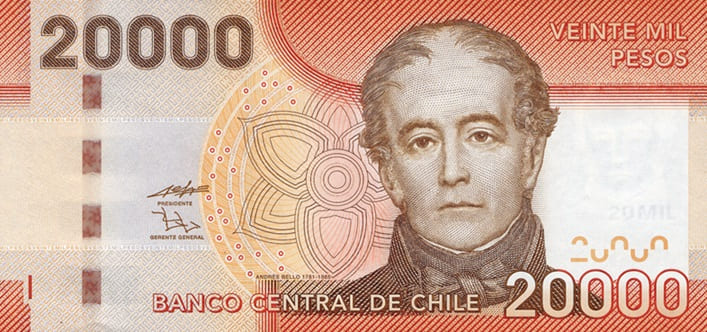
The highest denomination in Chile’s currency series, the $20,000 peso banknote, celebrates Andrés Bello, a Venezuelan-Chilean intellectual who founded the University of Chile and was a central figure in the development of Chilean law, notably authoring the Civil Code. Bello’s contributions to education and legal reform have left an indelible mark on the nation’s cultural and legal framework.
On the reverse, the bill features the otherworldly landscape of the Salar de Surire, a salt flat located in the Arica and Parinacota Region. This striking area sits at an altitude of approximately 4,300 meters above sea level and is part of the Las Vicuñas National Reserve. It is home to an array of bird species, including flamingos, one of which is beautifully depicted on the banknote. The surreal, salt-encrusted landscape of the Salar de Surire is a reminder of the diverse and dramatic geography that makes Chile one of the most geographically varied countries in the world.
The $20,000 bill is the largest in size, measuring 148mm x 70mm, and like the $10,000 bill, it is printed on cotton paper. Its expansive design captures both the intellectual legacy of Andrés Bello and the remote, unearthly beauty of Chile’s high-altitude ecosystems.
Each Chilean banknote tells a unique story, blending the country’s rich history with its natural wonders. From Ignacio Carrera Pinto and the Torres del Paine to Andrés Bello and the Salar de Surire, these banknotes are not only tools of commerce but also vivid reminders of Chile’s cultural heritage, historical milestones, and ecological diversity. Through their intricate designs and careful selection of figures and landscapes, Chile’s banknotes serve as guardians of the nation’s memory and identity, preserving its essence for future generations to discover and admire.
